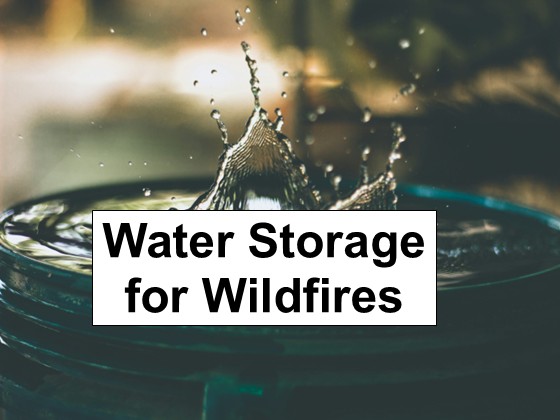Whether you’re a doomsday prepper or a concerned citizen in a vulnerable location, everyone should know how to keep and access water during a wildfire. It’s essential for survival and for staying strong in emergencies. Follow these best practices to prepare for trouble and maintain constant water security.
Understanding Water Needs in Wildfire Situations
In 2023, 56,580 wildfires destroyed 2,693,910 acres of land. This number is lower than several previous years, but you must remain vigilant. Wildfires are inconsistent in their strength and spread, so you should never underestimate how they may act from year to year. No matter how many disasters happen, daily water needs stay the same.
The average person requires between four and six cups of clean drinking water every day, which may vary based on your biology. Multiply this by the number of days you want to prepare for and how many people are in your care. Be sure to consider pets, planning extra water based on their body weight.
Having reserves is vital for doomsday preparedness. However, you may be cut off if the area becomes inaccessible. You should have multiple ways to fulfill your water intake if you evacuate. Collaborate with neighbors to create extra stocks and make a list of local resources to contact if you desperately need clean water.
Industrial and commercial facilities must comply with water quality standards to serve their citizens. This includes emergency response plan preparation and environmental support, so you know they frequently sample and test supplies for public consumption.
Types of Water Storage Solutions
Your emergency water reserves must be in airtight, sturdy vessels. What are the top options for long-term storage?
Food-grade plastic containers are your best friend. They are resilient, though lower-quality materials may degrade over time and contaminate clean water. Test emergency stores regularly or exchange containers if you suspect they’re aging. If you use plastic, try finding opaque tanks so light exposure doesn’t encourage algal growth.
Metals such as aluminum and stainless steel are other safe choices. You should review them periodically for rust, but they’re durable and trustworthy in the heat.
Water bladders have flexible plastic, which could make them easier to transport when evacuating, especially since many of them have handles. You can source any of these containers from outdoor equipment shops.
If you want extra security, set up rainwater harvesting barrels at home. Capturing and sanitizing rain per local regulations is a low-budget yet efficient way to amplify disaster preparedness.
Best Practices for Water Storage
Your emergency water needs to stay in a secure location. The area should be cool and dark to discourage bacterial growth and pests. If possible, keep everything away from flood-prone spots so runoff and other pollutants can’t enter your containers.
The location must also use fire-prevention measures to protect its contents. Flame-retardant insulation, monitoring equipment and fire suppression systems can safely stave off flames until you can recover water.
Everything should also have thorough, up-to-date labels. They could include any of the following information:
- Date prepared: Reminder when water was stored
- Rotation date: Notification to replace for freshness
- Water purification method: Description of treatment strategy, such as tablets or filters
- Liquid volume: Weight of contents to catch leaks or other container compromises
Keep maintenance schedules if you’re working with a large family or at a community level. They should describe who is responsible for refilling and checking containers and tanks. You’ll also want to include instructions for these individuals on communicating problems with emergency reserves.
Maintaining Water Quality and Safety
Water is only useful during a wildfire if you know it’s safe to drink. You have a few options for at-home sanitation.
You could use filters to capture large particles, which you can buy from the store. They’re available in several materials, like activated carbon or ceramic, making them inexpensive and effective at removing bacteria and odors.
Do-it-yourself filtration is also doable but may be less comprehensive than a tested product. You only need a medium like sand or gravel to run the water through. This is the first step before purification.
Iodine tablets and unscented bleach are the most accessible ways to purify water chemically. Follow dosage instructions carefully. If you’re hesitant to do this yourself, local well water contractors and health departments can connect you with someone qualified to treat your stock.
What if you have to clean water during a wildfire evacuation? What you have may be contaminated after a disaster, so keep tablets and filters on hand, just in case.
These should already be in your go bag, alongside a directory of community resources to contact if you require water treatment post-evacuation. Other essentials in an emergency kit include nonperishable food, flashlights, medications and chargers. Boiling water is another solid way to kill harmful contaminants.
Beating the Heat
You must prepare as much as possible for the worst-case scenario. As the climate worsens, places that have never experienced wildfires may feel their fury soon. Be confident amid the chaos by having robust, treated water reserves. Get started today because it’s one of the best ways to get through natural disasters calmly.
[Note: This was a guest post.]

Leave a Reply